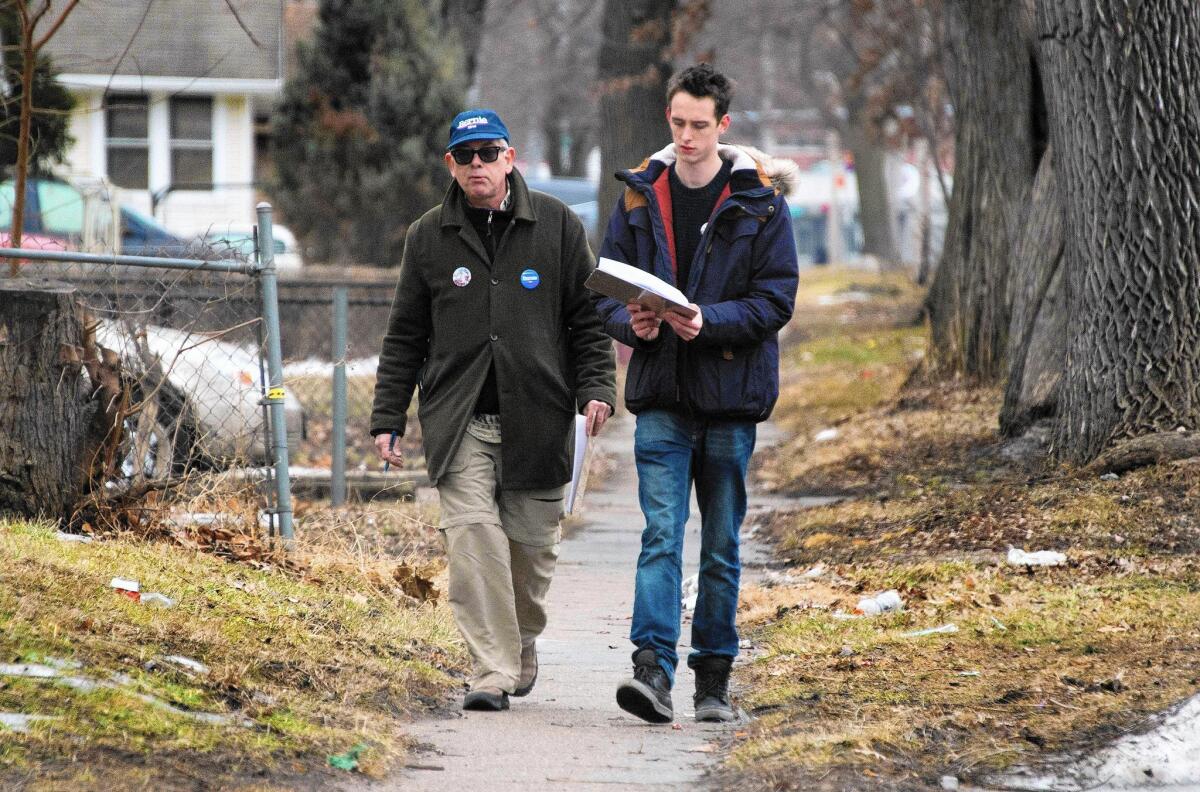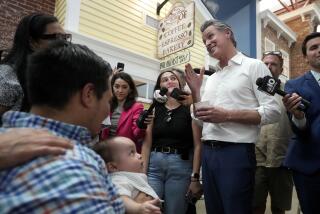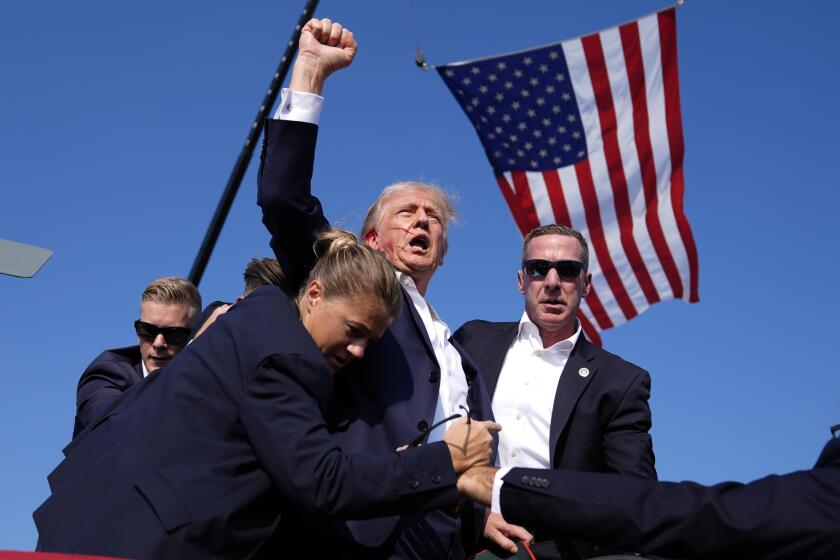Occupy movement protesters fight on — now in support of Bernie Sanders

Reporting from DES MOINES â A few hours after Bernie Sanders announced he was running for president, a group of activists associated with Occupy Wall Street sent an email blast endorsing his candidacy.
It was a perfect match. The protesters, whose ragged encampments across the United States in 2011 sought to call attention to growing income inequality, finally had a presidential candidate who vowed to tax Wall Street and take on the âbillionaire class.â Sanders even embraced their movementâs catchphrase, haranguing the nationâs wealthy elite as âthe 1%â in nearly every speech.
The activists quickly went to work for Sanders in early primary states and online, where one Occupy organizer coined the #FeelTheBern hashtag that became the campaignâs de facto slogan.
In Iowa this week, former Occupy protesters could be found easily among Sandersâ volunteers, knocking on doors and dialing voters to drive Sanders supporters to Mondayâs caucus.
But their most significant contribution to the Vermont senatorâs rapid rise may have been their protestâs message.
âEconomic inequality didnât become a mass issue until Occupy,â said Michael Kazin, a Georgetown University history professor and co-editor of the leftist magazine Dissent. âIt was the catalyst for publicizing these ideas and getting Americans to talk about them in ways they hadnât before.â
In other words, Sanders might not be where he is today, trailing Hillary Clinton by just a few percentage points in the polls, if Occupy hadnât helped focus attention five years ago on the ideas that are now at the core of his campaign.
âOccupy helped elevate the narrative that we have a rigged political system and a rigged economy,â said Hugh Espey, a community organizer in Des Moines who was arrested with dozens of Occupy protesters when they refused to leave the grounds of the Iowa statehouse.
He sees Sanders, a longtime independent who was agitating for greater economic equality long before many Occupy protesters were born, as the latest incarnation in a string of progressive presidential candidates from inside and outside the Democratic Party that includes Dennis Kucinich and Ralph Nader. But those candidates never generated as much support as Sanders, who has repeatedly drawn more than 10,000 people to his rallies.
His popularity is partly âthe inheritanceâ of Occupy and the political awakening that occurred after the 2008 economic collapse, said Espey, the director of Iowa Citizens for Community Improvement, a group whose political action fund has been operating phone banks and other get-out-the-vote activities for Sanders.
Occupy came on the scene in the fall of 2011 when hundreds of activists partly inspired by the âArab Springâ uprisings erected tents in Zuccotti Park in New Yorkâs financial district. The protest was pointedly leaderless and took aim at an array of targets, including what activists described as the corrupting influence of money in politics and the role major banks played in the financial crisis. Protesters called themselves âthe 99%,â in contrast to the 1% of Americans who control most of the countryâs wealth.
Similar demonstrations popped up around the country. Most of them ended on their own or were evicted from protest sites by police by the end of the year.
Not everyone who is supporting Sanders was involved with Occupy. But a large number of people who were involved with Occupy are supporting Sanders.
In 2011, filmmaker Bob Swope drove to the Occupy protest in Columbia, Mo., and asked how he could help.
Last week, Swope drove four hours to Des Moines to volunteer for Sanders.
He spent the weekend canvassing neighborhoods with another volunteer, a 21-year-old from France. As they walked down an oak-lined street, keeping their eyes to the ground to avoid patches of black ice, Swope said he appreciated the energy of the Occupy movement but became frustrated with its horizontal organizational structure.
âIt was kind of a movement without a leader,â Swope said. The Sanders campaign, with its clear and passionate leader, has more staying power, he believes.
Other former Occupy protesters stumping for Sanders in Iowa this week include Winnie Wong and Stan Williams, whose group, the People for Bernie, has developed a number of online memes and hashtags in support of the senator, including #FeelTheBern.
The protest movement and the Sanders campaign share more than just criticism of corporate money in politics, Wong said. Sandersâ pledge to provide tuition-free higher education and do more to combat climate change echoes the demands of protesters five years ago.
Wong sees the Sanders campaign as one way to continue the work the Occupy movement started.
âItâs been about making sure that we hang on to the narrative and the dialogue that people were talking about when Occupy was alive and thriving,â she said.
For Aaron Jorgensen-Briggs, a Sanders win would be the protest movementâs greatest victory.
âWe went from this moment in Occupy where we were just beginning to shed a light on these issues in a profound way on the national stage to the moment weâre in now, where we actually have a candidate for the highest public office in the country who has a platform that is addressing all of the issues that Occupy raised,â said Jorgensen-Briggs, who was involved with the Des Moines Occupy movement.
Lately, he said, heâs had to pinch himself.
âA candidate who talks about socialism could actually become president,â he said. âItâs absolutely unprecedented.â
See more of our top stories on Facebook >>
ALSO
U.S. to urge partners to do more to fight Islamic State amid complaints from Pentagon
Republican and Democratic candidates have a lot to lose in Iowa caucus
Alone in New Hampshire, John Kasich tries to talk his way to momentum
More to Read
Get the L.A. Times Politics newsletter
Deeply reported insights into legislation, politics and policy from Sacramento, Washington and beyond. In your inbox three times per week.
You may occasionally receive promotional content from the Los Angeles Times.











